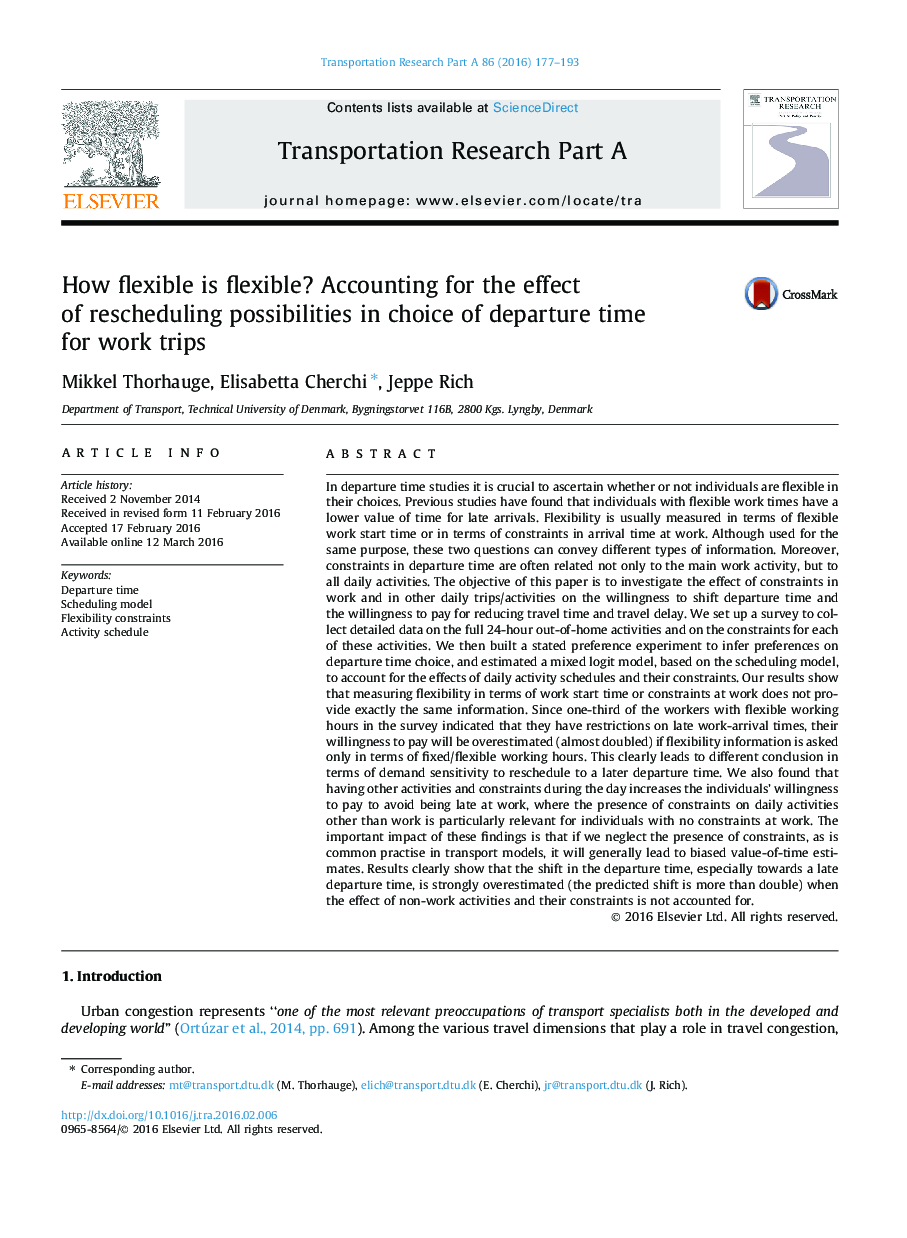| Article ID | Journal | Published Year | Pages | File Type |
|---|---|---|---|---|
| 6780961 | Transportation Research Part A: Policy and Practice | 2016 | 17 Pages |
Abstract
In departure time studies it is crucial to ascertain whether or not individuals are flexible in their choices. Previous studies have found that individuals with flexible work times have a lower value of time for late arrivals. Flexibility is usually measured in terms of flexible work start time or in terms of constraints in arrival time at work. Although used for the same purpose, these two questions can convey different types of information. Moreover, constraints in departure time are often related not only to the main work activity, but to all daily activities. The objective of this paper is to investigate the effect of constraints in work and in other daily trips/activities on the willingness to shift departure time and the willingness to pay for reducing travel time and travel delay. We set up a survey to collect detailed data on the full 24-hour out-of-home activities and on the constraints for each of these activities. We then built a stated preference experiment to infer preferences on departure time choice, and estimated a mixed logit model, based on the scheduling model, to account for the effects of daily activity schedules and their constraints. Our results show that measuring flexibility in terms of work start time or constraints at work does not provide exactly the same information. Since one-third of the workers with flexible working hours in the survey indicated that they have restrictions on late work-arrival times, their willingness to pay will be overestimated (almost doubled) if flexibility information is asked only in terms of fixed/flexible working hours. This clearly leads to different conclusion in terms of demand sensitivity to reschedule to a later departure time. We also found that having other activities and constraints during the day increases the individuals' willingness to pay to avoid being late at work, where the presence of constraints on daily activities other than work is particularly relevant for individuals with no constraints at work. The important impact of these findings is that if we neglect the presence of constraints, as is common practise in transport models, it will generally lead to biased value-of-time estimates. Results clearly show that the shift in the departure time, especially towards a late departure time, is strongly overestimated (the predicted shift is more than double) when the effect of non-work activities and their constraints is not accounted for.
Keywords
Related Topics
Physical Sciences and Engineering
Engineering
Civil and Structural Engineering
Authors
Mikkel Thorhauge, Elisabetta Cherchi, Jeppe Rich,
